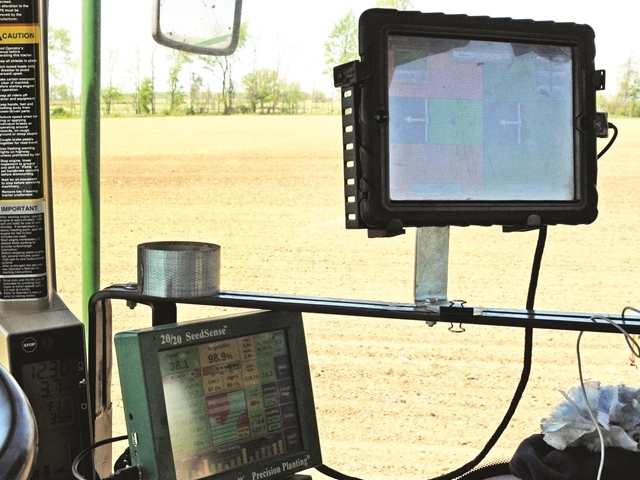Necessity is the mother of invention. And in a world of finite resources, some of the most brilliant minds are searching for ways to supply the planet’s rapidly growing need for food.

With the global population racing upwards to reach almost 10 billion people by 2050, global food demand could double between now and then – and there is a parallel need for quality diets and sustainability. The task is complicated both by lack of new land for farming (the planet is not expanding while the population is growing), and by climate change, already adversely affecting farmers’ lives and for many countries posing food security challenges.
“To produce double the amount of food, meet quality requirements, and respect global balances, current approaches and techniques have to change,” says Bertrand Colin de Chirac, EBS Head of Business Development at LDC.
“That’s where Silicon Valley meets farming. The two worlds learn to speak the same language to communicate because technology is a great part of the answer.”
Agricultural revolutions are defined in different ways by different people, but many compare the changes we are seeing today to the shift from hunter gatherer to settled agriculture, a transformation that defined our civilization.
These technological changes are reaching every corner of the agricultural industry, from input technologies such as seeds and fertilizers, through to precision farming involving drones and robots, big data, smart sensors, and the latest farm management software systems.

“The way technology responds to the pressures we are facing is revolutionary,” Mr. Colin de Chirac says. “It is by far the most rapidly expanding revolution and the beauty is that it can be scaled down to farm level, almost everywhere, at a constantly diminishing cost,” he added.
MyLDC
Even small advancements can make a big difference. For companies like Louis Dreyfus Company (LDC), new ways to share information rapidly and easily are transformational.
In October last year, LDC in North America launched “MyLDC”, a web portal that allows farmers to engage with the company in a better and easier way. In a single click they can monitor shipment tickets and payments from any device. Potentially, in the future, it could also help farmers to receive relevant information customized to their business, for example on markets and climate predictions.

“The advantages go both ways. The web portal is helping farmers to better manage their business with LDC while allowing the company to increase its services to the farmers and reduce its administrative costs,” says Damien Roy, Regional Head of Operations & IT for North America.
LDC is working to expand the web portal usage around the world, betting this is how transactions will be done in the future.
New technologies are increasingly becoming part of countryside landscapes.
The use of drones and precision agriculture has not only increased productivity, it has also helped sustainability and waste reduction.
Agronomists speak with enthusiasm about how location-specific information about soil nutrients, moisture and productivity helps apply fertilizer and crop protection products only on those areas that really need them, reducing nitrogen runoff into waterways.
The data is sent to tractors with GPS technology, allowing farmers to apply the substances for maximum yield and minimum cost.
Farmers used to apply these inputs pretty much over whole areas, but with precision farming this is changing rapidly. It improves yields and reduces the use of chemicals, lessening impact on the environment.
Source: Louis Dreyfus Company

